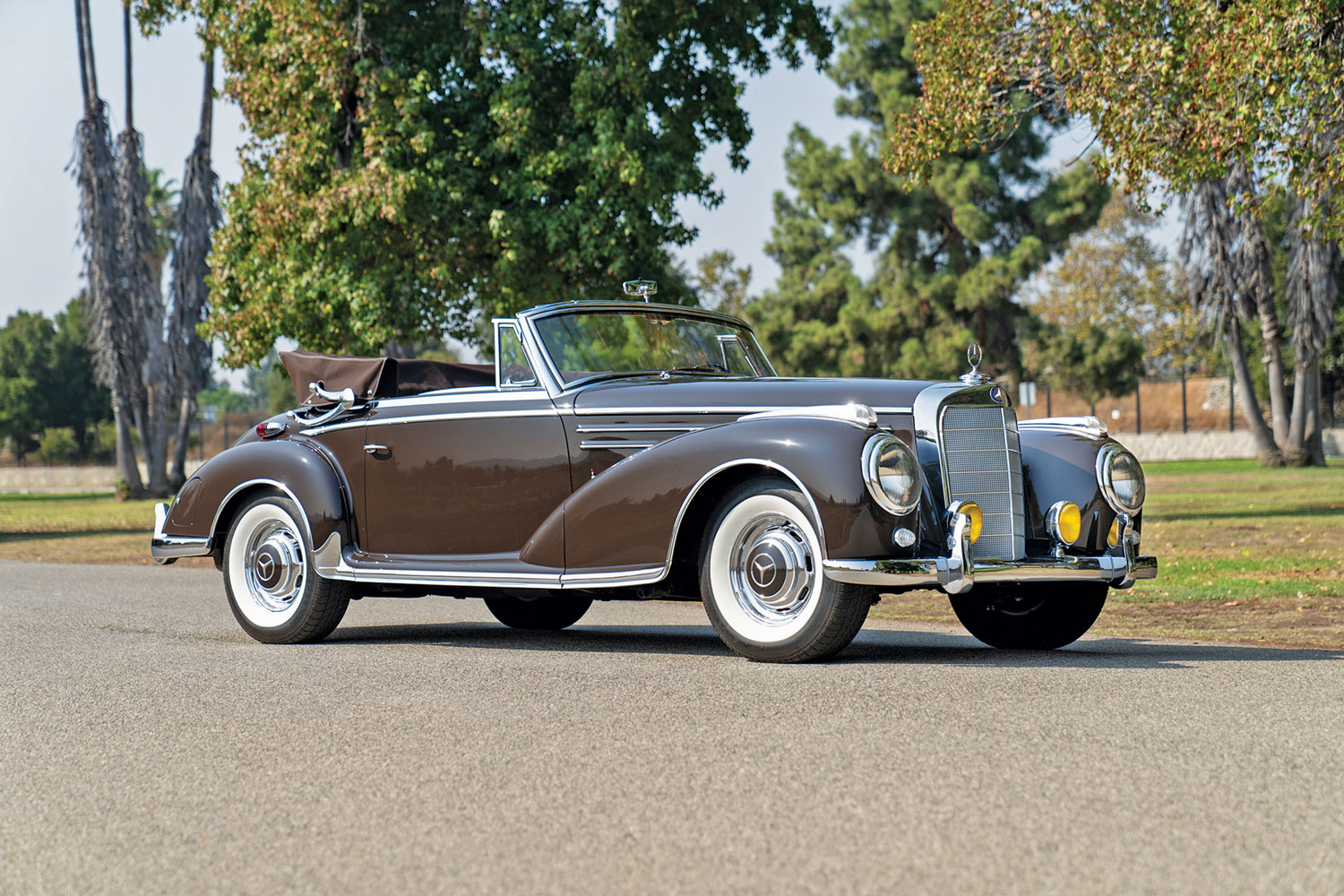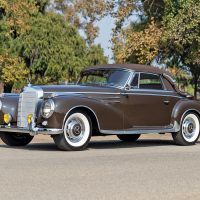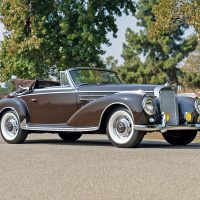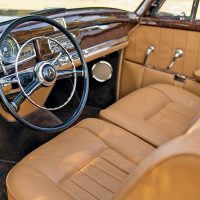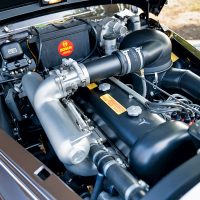
SCM Analysis
Detailing
| Vehicle: | 1956 Mercedes-Benz 300Sc Cabriolet |
| Years Produced: | 1955–58 |
| Number Produced: | 199 |
| SCM Valuation: | $750,000 |
| Tune Up Cost: | $1,000 |
| Chassis Number Location: | Cowl tag on passenger’s firewall and stamping and tag on right front chassis leg |
| Engine Number Location: | Tag and stamping on left side of block below cylinder head |
| Club Info: | Mercedes-Benz Club of America |
| Website: | http://www.mbca.org |
| Alternatives: | 1946–48 Lincoln Continental convertible, 1955–57 Rolls-Royce Silver Cloud DHC, 1934–1944 Mercedes-Benz 500K/540K cabriolet |
| Investment Grade: | A |
This car, Lot 58, sold for $748,000, including buyer’s premium, at Gooding & Company’s Geared Online sale held October 26–30, 2020.
Mercedes-Benz was heavily targeted by the Allies in World War II and thus suffered massive losses. It is utterly amazing how quickly it rebounded. By 1947 it was repurposing pre-war cars and trucks, and by the late ’40s it had introduced new cars based on the 4-cylinder flathead 170, basically pre-war cars with a slightly more-modern suspension.
This was followed by the 220, which used a 2.2-liter, overhead-cam 6-cylinder, with independent front suspension and a swing-axle rear. It had a column-shifted 4-speed transmission and was available in a variety of body styles including a sedan, a 4-passenger cabriolet, a 2-passenger cabriolet and a coupe.
Descendant of the Ks
Following quickly in its footsteps, Mercedes introduced the 300 series, with a 3-liter OHC I6 with 115 horsepower, available as a 4-door limousine and a 4-door cabriolet. At the 1951 Paris Motor Show, it introduced the 300S, which used a three-carb version of the engine to produce 150 hp. An exclusive grand-touring car, it could be custom built to order in either a 2-door coupe, cabriolet or roadster. All were designed in-house by Hermann Ahrens, the man responsible for the pre-war 500/540Ks. The design was decidedly retro, with no envelope body or integrated grille, but with separate fenders and a prominent chromed radiator with the iconic three-pointed star on the radiator cap. Subtle it was not.
In 1954, of course, Mercedes introduced the famous 300SL Gullwing, a loss leader to get foot traffic into the showrooms. As it sold for just under $8,000, I’m sure money was lost on each one. A year later, the 300Sc came to market, also offered in coupe, cabriolet and roadster bodies. Distinguished from its older sibling, it now had Bosch fuel injection in place of carbs (good for 175 hp), a refined steering ratio, and a low-pivot swing axle in place of the standard VW-style swing axle. These cars were truly hand-built, on a separate production line with an array of paint, leather and wood choices, much like their predecessors, the 540Ks. For comparison, in 1955 a Chevy convertible was $2,300, a Cadillac Eldorado was about $5,500, and a 300Sc was just under $15,000 — almost twice the price of a Gullwing!
As visually stunning as the cars were, they were a tough sale at the price. Americans were power-hungry, and at almost 4,500 pounds, the 300Sc was abysmally slow. Couple that with the lack of power steering, an automatic transmission, power top or a/c and it was an uphill battle to sell this anachronistic machine.
A declining market
The car here is a very nicely presented example, restored by a well-known and respected marque specialist. I noticed a few of the details were incorrect, but nothing major. It sold for just below the low estimate, but why? It confounds me why someone would present a wonderful car like this and not spend the time to detail the chassis. Presentation is everything!
Using all of our collector-car rules of thumb, this should be a much more valuable car. Being a convertible and one of only 49 cabriolets built, it fits into an exclusive category of an open car with low build numbers, which should mean big money. But it doesn’t, relatively speaking.
The price paid here is indicative of where the market is going. These cars are much more expensive to restore than a 300SL — more prone to rust, more chrome, more wood, more leather and roughly the same mechanical costs. Yet they are slow and ponderous to drive, much less park. A young person with a million bucks to spend can get into a 300SL and enjoy the experience. Not so much with these cars. The market for these is aging out, and the days of owning cars like this as a static investment are over. If they’re not fun to drive or if they cannot be used easily, their days are numbered.
This one was both well sold and bought. The buyer got a still-fresh restoration for less than what he’d have to spend on another car, and the seller got out of a falling market. ♦
(Introductory description courtesy of Gooding & Company.)
